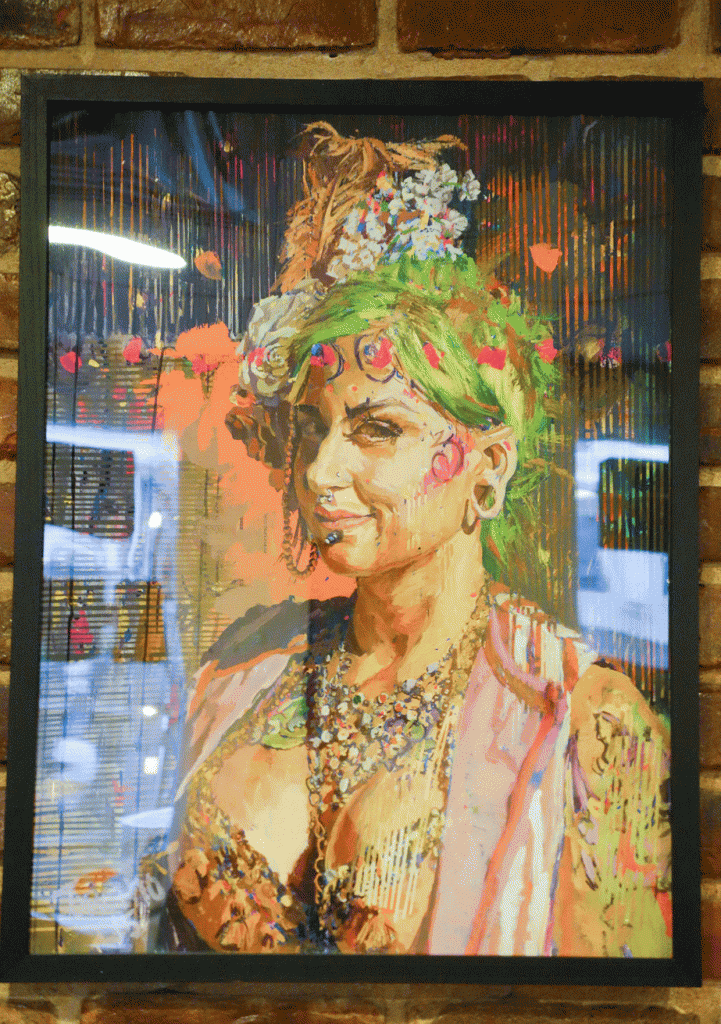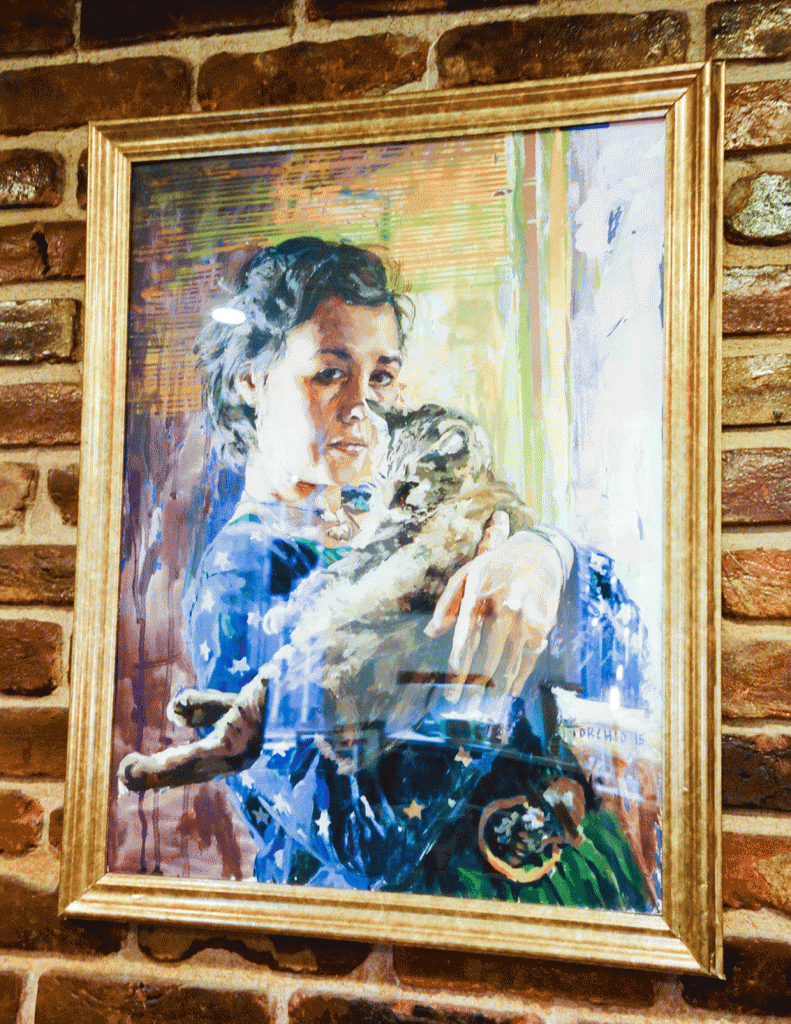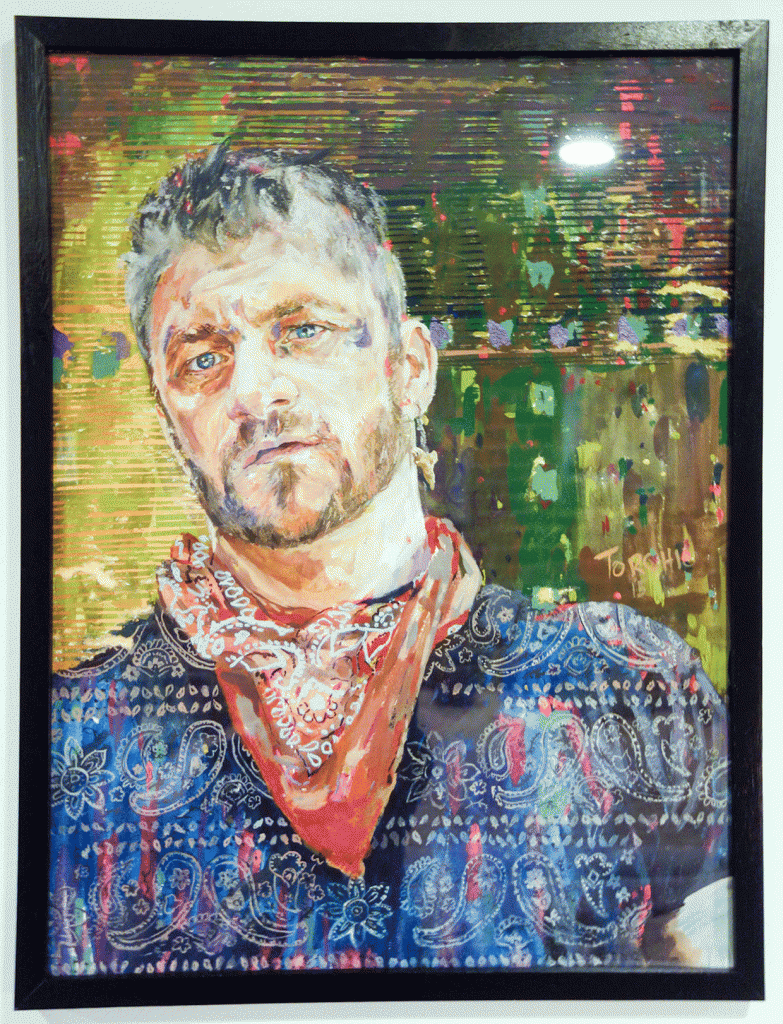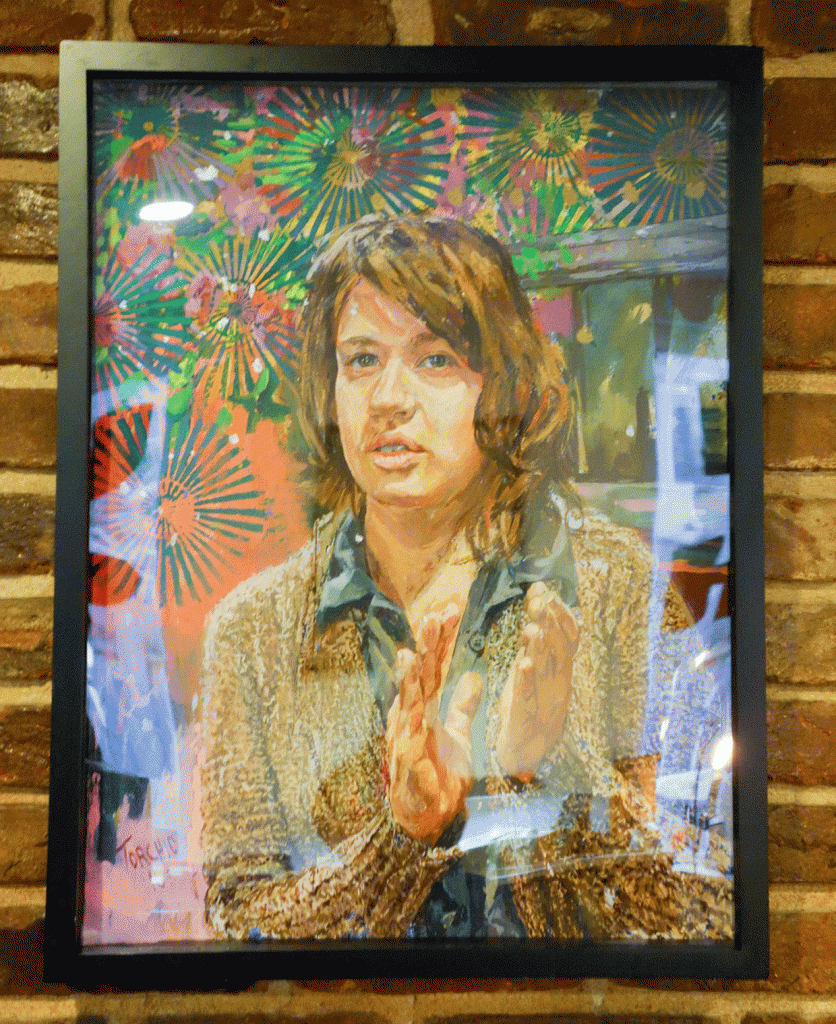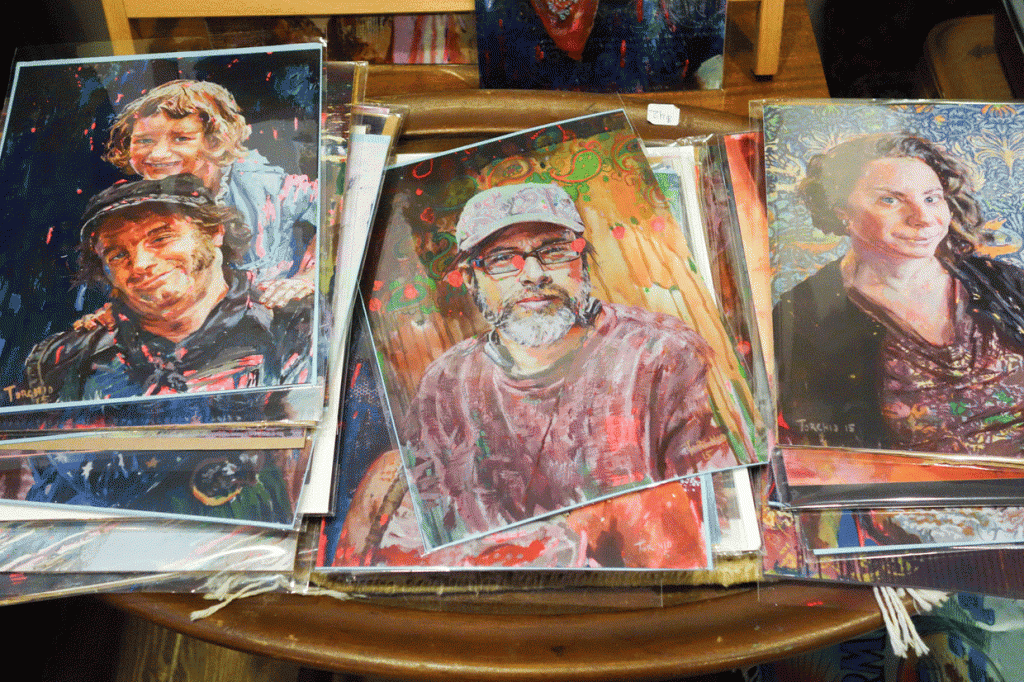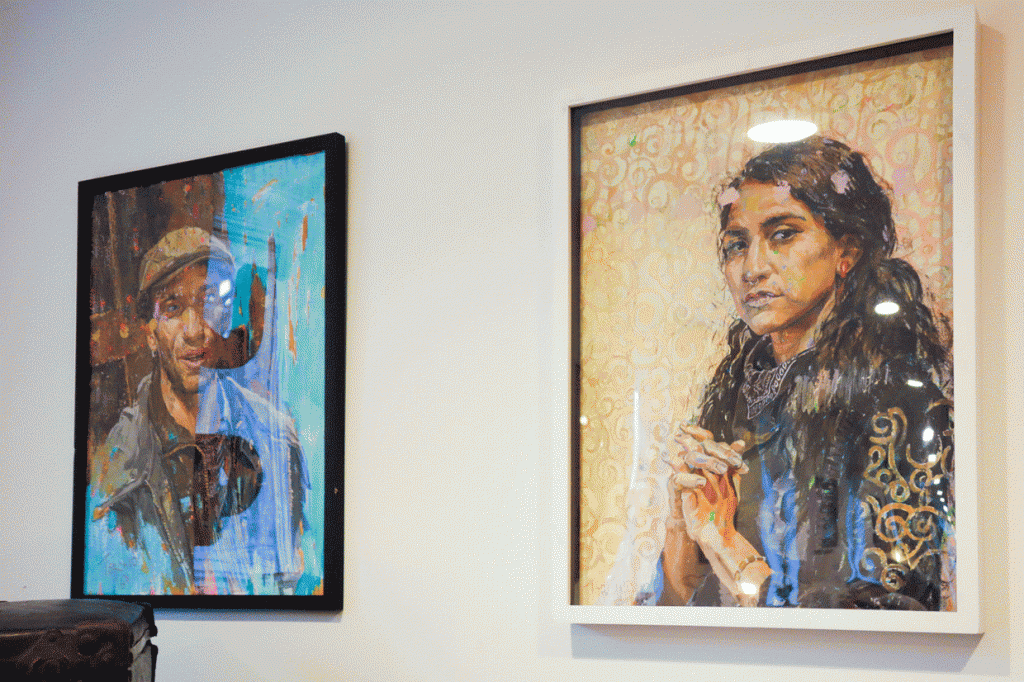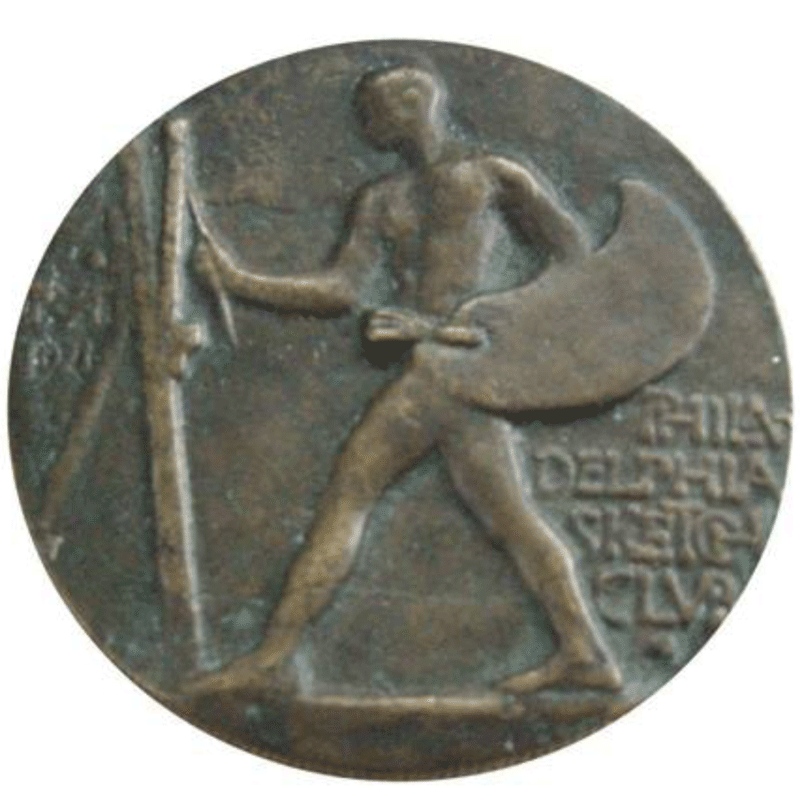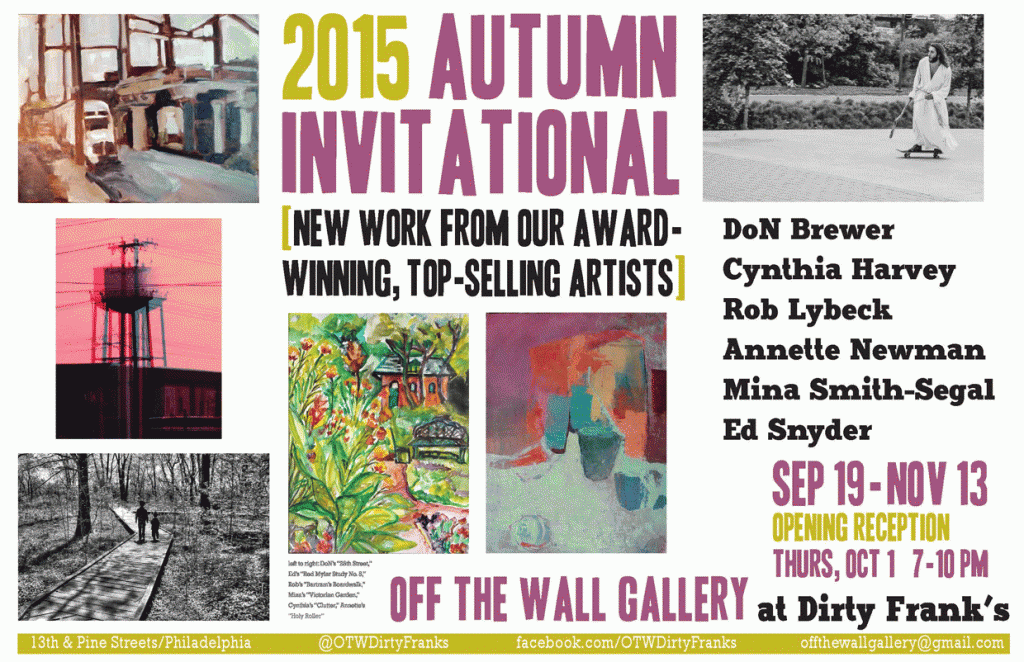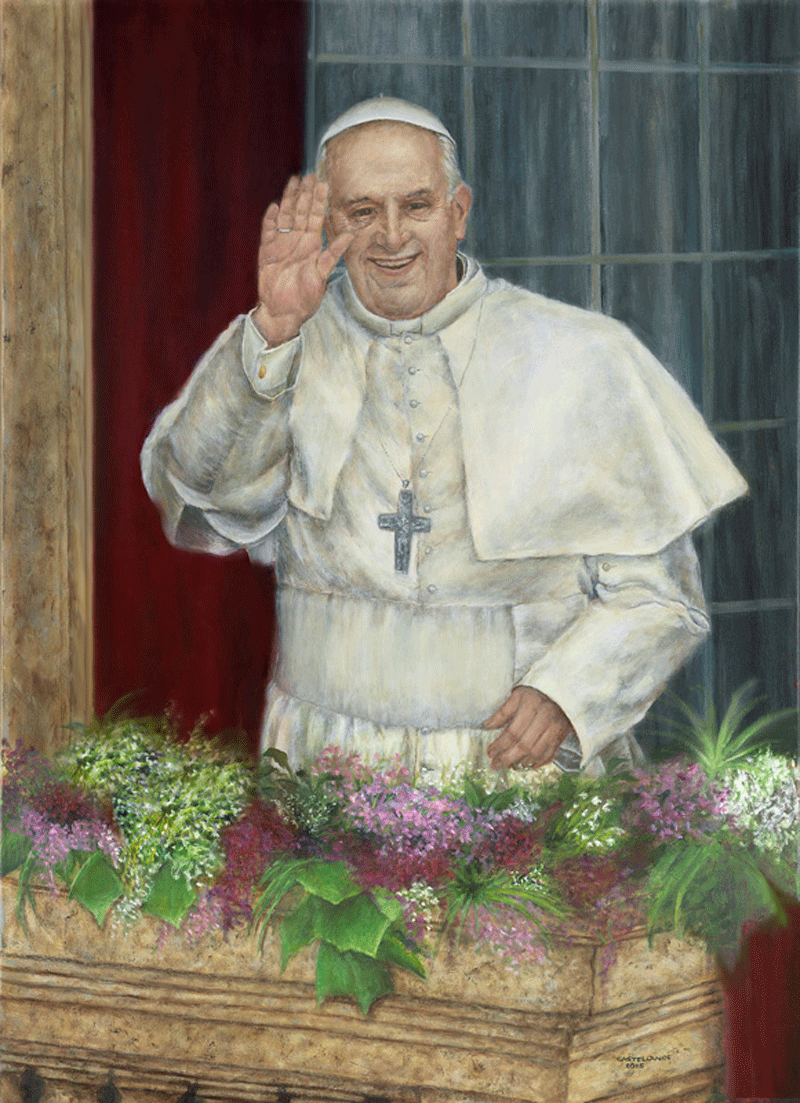
How My Portrait of Pope Francis Came Into Being by Sylvia Castellanos
It all began when Pope Francis’ plan to visit Philadelphia in 2015 made me decide to paint him. This straightforward plan set off a chain of decision-making which I wish to chronicle here, particularly for the benefit of non-artists. Contrary to what people assume, painters are not necessarily handed a pre-packaged solution. The reality is far more complex and time-consuming than that, and what develops sometimes surprises even the artist.
Catching the sitter’s likeness is only the beginning of a good picture. To be a quality portraitist, an artist must have many instincts in common with novelists and playwrights and, like them, focus on developing the personality. If possible, too, he should also try to present his subject in an ideal dramatic moment. In other words, he should catch the subject in a pose that is somehow compelling to the viewer in addition to conveying the person’s essence.
I have done a great deal of painting of public figures from the present and the past, necessarily relying on photographs. There are people I have never painted because I’ve never found the right photographs—it is that important. More often, I find one picture possessing some of the elements I seek, but the remainder must come from other sources. I have developed a lot of practice in creating complex jigsaw puzzles as a result.
I began by considering the qualities I associated with Pope Francis. Charisma, a joyous smile, and extraordinary warmth toward people made my list. I started looking at photographs with no particular design in mind.
I found myself coming back to the picture on the left, ideal in many ways. It catches that great big smile full of joy and love, and the upraised hand is greeting every one of us. This is a perfect example of the sort of compelling dramatic moment I just talked about. I knew, though, this picture involved problems and so I’d keep looking. And yet, after a while I’d be drawn back to it again. Here was the problem—in what setting would he be waving at people? The background in the photograph clearly had to be discarded. What would I use in its place?
It’s not as simple as it sounds. My first thought was having him in a motorcade waving at the crowds, something closely associated with him. But look what happens when I try this: He’s got his back to the crowd—no good!
Then I thought of using a church as a backdrop, which seemed reasonable.
The impression, unfortunately, was that he’s in a big empty building waving at…an imaginary friend? Back to the drawing board.
Sometimes things that seem “meant to be” are identified only when well into the process. I am not sure when it came to me…a balcony! This addressed all my concerns—the question was settled. And I knew instantly which it would be—the iconic ceremonial balcony in St. Peter’s where popes address the crowds.
I was happy to find a very high resolution picture of the façade of St. Peter’s which, enlarged, permitted me to see all the details of the balcony area. I noted the stone construction, the glass doors with thin white drapery, and the heavy burgundy drapes outside the glass doors. I would need this visual information.
Further research produced a few more photographs, including those of Easter Sunday celebrations, of which these are a sample.
The minute I saw them, I knew Easter would be my setting. I loved using this most joyous occasion on the Christian calendar as my theme, incorporating the gorgeous flowers and the beaming smile on the Pope’s face. The photos permitted me to pick up on other details, such as the large burgundy banner draped over the front of the balcony, which I knew I would use. The main elements were now in place.
So that is what I began with—a figure detached from its original background and a few pictures for a proposed setting taken from angles I could not use.
That was okay, though, because I was about to recreate St. Peter’s at home. After half an hour working with clay, cardboard, masking tape and a cutting tool, I had my own St. Peter’s balcony. Using the photograph of the façade of the building, I printed out the wall at the back of the balcony, greatly enlarged (this, incidentally, is why I had been so happy to find a very high resolution photograph). I taped it to the vertical piece of cardboard behind my balcony and I was set.
And I had a pope, too. Really. That is the pope.
I proceeded to take photographs from every conceivable angle for an important reason. The only drawback of the pose I had chosen was it was fully facing front, which is very static. The Pope had to be surrounded with elements at an angle to give the composition more life. Out of the dozen images I took from all perspectives, I chose the corner where the side and the front of the balcony meet, feeling this presented good artistic possibilities.
In real life, of course, when events take place the balcony is packed with people, and cameramen station themselves around that particular corner of the balcony. This raises a consideration that I dealt with several times—historical accuracy vs. compositional logic. A trade-off is inevitable, and the artist has to make a choice on a case-by-case basis. Even I, a huge stickler for historical accuracy, accept this. Thus at the St. Peter’s Basilica of Philadelphia, where we control access, all superfluous people have been vanished, leaving the Pope to make an intimate connection with us, the viewers of the picture.
So with the decision having been made, a little Photoshop magic pasted the real Pope into the shot. It’s starting to take shape now, right? ( I know you doubted).
I know in general terms what the balcony and the back wall are going to look like, but it’s time to have something more detailed. Now I take out paper, pencil and rulers, and I do a perspective drawing of the relevant elements. All portraitists should have at least basic knowledge of perspective drawing, which provides the answer to every question he can have about where the lines are supposed to go.
Finally, I had to make a choice about the flowers. As of 2015, Pope Francis has officiated over two Easter ceremonies. One year the colorful flowers in the pictures I showed earlier decorated the balcony, while the other year white roses (left) were chosen. So I could have my pick. As gorgeous as these roses were, I reluctantly decided against them.
I knew in advance the colors in the composition lacked variety. There was the beige-grey color of the stone, the maroon of the textiles, and surfaces that were basically white—that was it. Moreover, there were lots and lots of square inches covered with white when one took in both the Pope’s garment and the drapery that covers much of the background. I knew I would need to handle each with different hues to avoid monotony. Was I going to have a third white element to add to the problem? Not if I could help it. Out went the beautiful white roses in favor of the (also attractive) orchids/lilies that brought tones of fucshia and pink into the mix. And thank god for the green of the foliage, too.
I had one more horticultural task. I emailed the flowers to an amateur gardener. What are they? I asked. Either Dendrobium Orchids or Bugle Lilies, my friend wrote back. I printed out some pictures of both varieties of flower to use when time came to create from thin air the floral arrangement.
Only at this point was I finished. Oh, wait —there was unfinished business. I still had to paint the portrait. It only felt like I was finished.
The weeks that followed took my work from a large piece of fabric covered with brown underpainting to a completed painting, a process I don’t have the space to chronicle. Clearly, achieving the likeness was critical, for a portrait which does not look like the sitter is worthless. Some important elements remained to be worked out as I went along. And yet, arguably the most important decisions were made before a single drop of paint was applied to canvas.
Creating art is a complex process, and the appearance of a picture does not just fall into place by itself. Many factors go into the design, and ways must often be found to simulate individual elements. The ultimate irony is that the more natural the result looks, probably the more thought went into it.
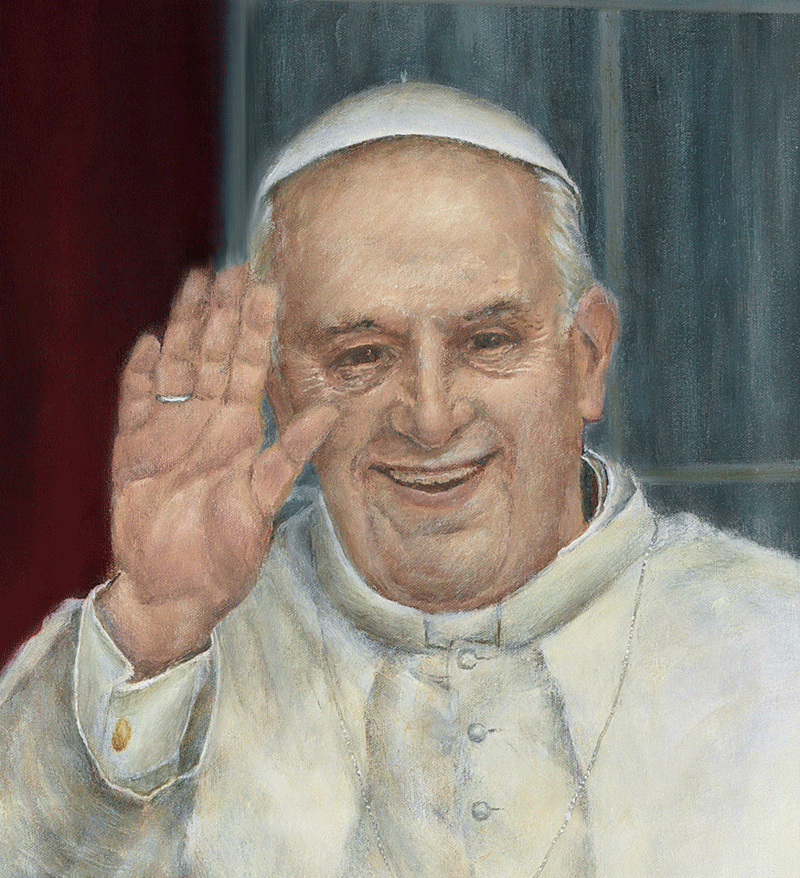 Portrait of Pope Francis, oil on canvas, Sylvia Castellanos
Portrait of Pope Francis, oil on canvas, Sylvia Castellanos
Written by Sylvia Castellanos
“Artist Sylvia Castellanos, who emigrated to the United States from her native Cuba as a child, has executed hundreds of portraits and figurative works of everyone from Washington dignitaries to Central American campesinos.While her portraiture covers a broad range of subject matter and moods, its emphasis is consistently on capturing the individual’s spirit in a nuanced, sensitive way.
After earning a graduate degree from Princeton University, she moved to Washington, D.C. in the early seventies. For the remainder of the decade she combined holding a prestigious position in the Senate with doing commissioned portraits for clients prominent on Capitol Hill.” – Sylvia Castellanos
Like DoNArTNeWs Philadelphia Art News Blog on facebook
Follow the new DoNArTNeWs.com
Follow DoN on Twitter @DoNNieBeat58
DoNArTNeWs on Tumblr
DoN Brewer on Pinterest
@donniebeat on Instagram
Affiliate Marketing [disclosure page] Shop on-line and help support DoNArTNeWs
Donate via safe and secure PayPal in the sidebar.
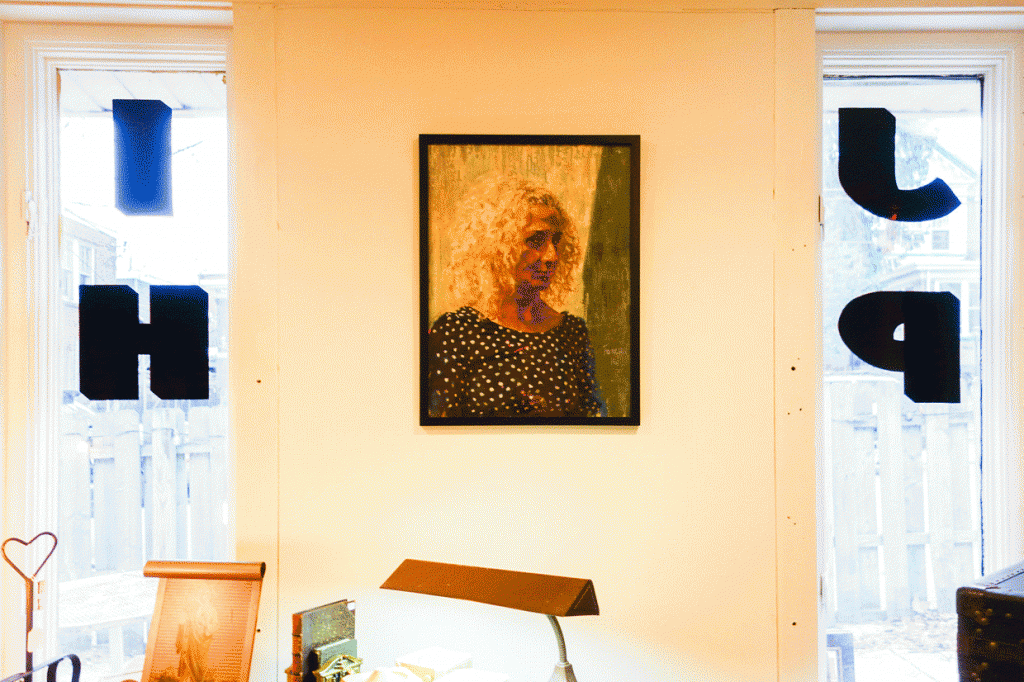 Syd Torchio at Jinxed West Philly
Syd Torchio at Jinxed West Philly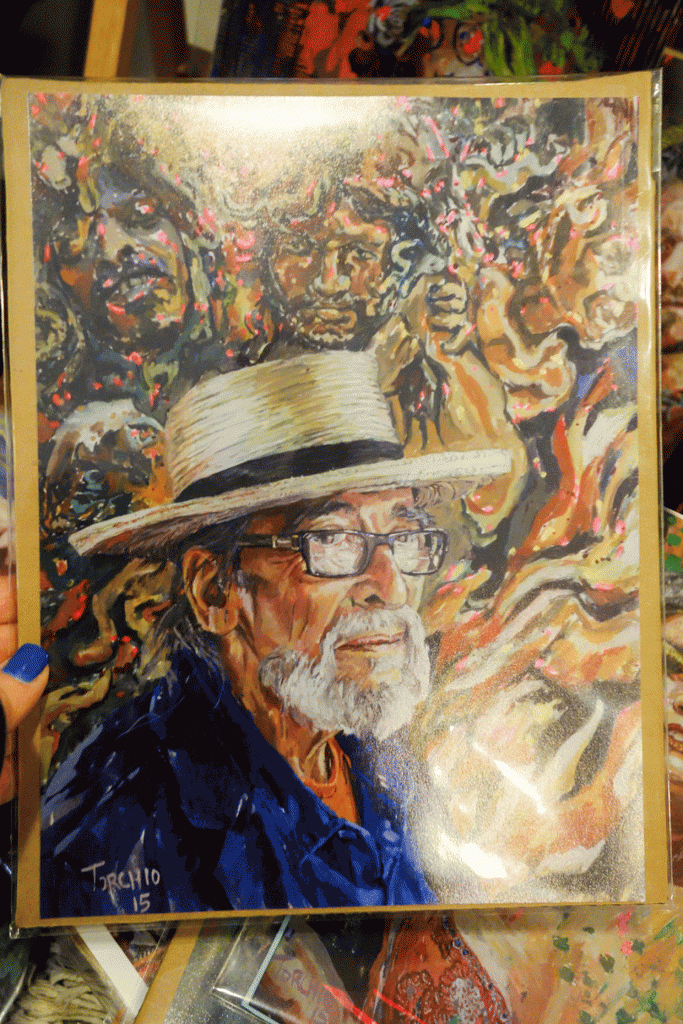 Syd Torchio at Jinxed West Philly
Syd Torchio at Jinxed West Philly
